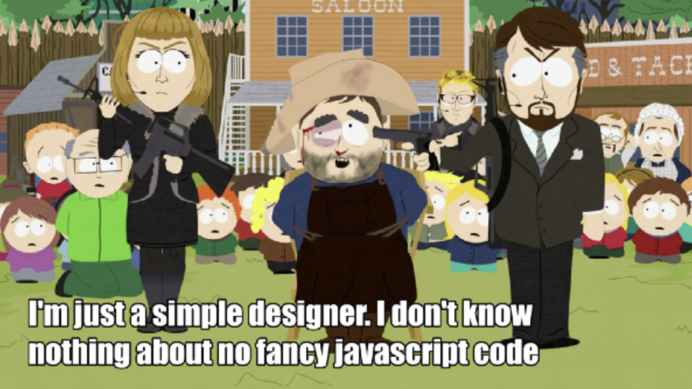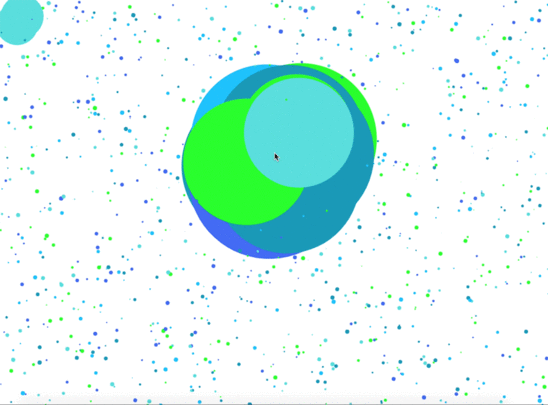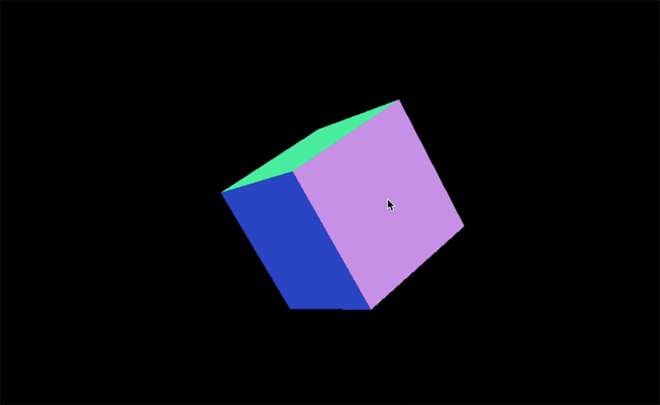Interfacing the law javascript Zalan Szakacs: Difference between revisions
No edit summary |
No edit summary |
||
| Line 13: | Line 13: | ||
</gallery> | </gallery> | ||
<br> | <br> | ||
'''Canvas''' | |||
First I started with basic beginners JavaScript tutorials and tried to explore the canvas library. | First I started with basic beginners JavaScript tutorials and tried to explore the canvas library. | ||
| Line 216: | Line 219: | ||
<br> | <br> | ||
Drawing script | '''Drawing script''' | ||
<pre> | <pre> | ||
| Line 284: | Line 287: | ||
'''ThreeJs''' | '''ThreeJs''' | ||
To be understand the use of the 3D in JavaScript I had to dive in to some theory of the system how it is build up. Having 3D experience from Cinem4D it helped a bit to get familiar with ThreeJs. | |||
<pre> | <pre> | ||
Revision as of 10:26, 6 June 2018
JavaScript
Canvas
First I started with basic beginners JavaScript tutorials and tried to explore the canvas library.
var canvas = document.querySelector('canvas')
;
canvas.width = window.innerWidth;
canvas.height = window.innerHeight;
var c = canvas.getContext('2d');
// c.fillStyle = 'rgba(255, 0, 0, 1)';
// c.fillRect(100, 100, 100, 100);
// c.fillStyle = 'rgba(0, 0, 255, 1)';
// c.fillRect(400, 100, 100, 100);
// c.fillStyle = 'rgba(0, 255, 0, 1)';
// c.fillRect(300, 300, 100, 100);
// console.log(canvas);
//Line
// c.beginPath();
// c.moveTo(50,300);
// c.lineTo(300,100);
// c.strokeStyle = 'rgba(0, 0, 255, 1)';
// c.stroke();
//Arc
//c.beginPath();
//c.arc(300, 300, 30, 0, Math.PI * 2, false);
//c.strokeStyle = 'red';
//c.stroke();
// for (var i = 0; i < 10; i++) {
// var x = Math.random() * window.innerWidth;
// var y = Math.random() * window.innerHeight;
// c.beginPath();
// c.arc(x, y, 30, 0, Math.PI * 2, false);
// //c.fillStyle = 'rgba(0, 255, 0, 0.5)';
// //c.fill();
// c.strokeStyle = 'red';
// c.stroke();
// }
var mouse = {
x: undefined,
y: undefined
}
var maxRadius = 40;
//var minRadius = 2;
var colorArray = [
'#4166f5',
'#00bfff',
'#11ff00',
'#55dddd',
'#0d98ba',
];
console.log(colorArray.length);
window.addEventListener('mousemove', function(event) {
mouse.x = event.x;
mouse.y = event.y;
})
window.addEventListener('resize', function()
{
canvas.width = window.innerWidth;
canvas.height = window.innerHeight;
init();
});
function Circle(x, y, dx, dy, radius) {
this.x = x;
this.y = y;
this.dx = dx;
this.dy = dy;
this.radius = radius;
this.minRadius = radius;
this.color = colorArray[Math.floor(Math.random() * colorArray.length)];
this.draw = function() {
c.beginPath();
c.arc(this.x, this.y, this.radius, 30, 0, Math.PI * 2, false);
c.fillStyle = this.color;
c.fill();
}
this.update = function() {
if (this.x + this.radius > innerWidth || this.x - this.radius < 0) {
this.dx = -this.dx;
}
if (this.y + this.radius > innerHeight || this.y - this.radius < 0) {
this.dy = -this.dy;
}
this.x += this.dx;
this.y += this.dy;
//interactivity
if (mouse.x - this.x < 50 && mouse.x - this.x > -50
&& mouse.y - this.y < 50 && mouse.y - this.y > -50
) {
if (this.radius < maxRadius) {
this.radius += 1;
}
this.radius += 1;
} else if (this.radius > this.minRadius) {
this.radius -= 1;
}
this.draw();
}
}
var circleArray =[];
function init() {
circleArray = [];
for (var i = 0; i < 1000; i++) {
var radius = Math.random() * 3 + 1;
var x = Math.random() * (innerWidth - radius * 2) + radius;
var y = Math.random() * (innerHeight - radius * 2) + radius;
var dx = (Math.random() - 0.5);
var dy = (Math.random() - 0.5);
circleArray.push(new Circle(x, y, dx, dy, radius));
}
}
function animate() {
requestAnimationFrame(animate);
c.clearRect(0,0, innerWidth, innerHeight);
for (var i = 0; i < circleArray.length; i++) {
circleArray[i].update();
}
}
init();
animate();
Drawing script
var canvas = document.getElementById('canvas');
var context = canvas.getContext('2d');
canvas.width = window.innerWidth;
canvas.height = window.innerHeight;
window.addEventListener('resize', function()
{
init();
});
var radius = 5;
var dragging = false;
canvas.width = window.innerWidth;
canvas.height = window.innerHeight;
context.lineWidth = radius*2;
var putPoint = function(e) {
if(dragging){
context.lineTo(e.clientX, e.clientY);
context.strokeStyle = '#55dddd';
context.stroke();
context.beginPath();
context.arc(e.clientX, e.clientY, radius, 8, Math.PI*2);
context.fillStyle = '#55dddd';
context.fill();
context.beginPath();
context.moveTo(e.clientX, e.clientY);
}
}
var engage = function(e){
dragging = true;
putPoint(e);
}
var disengage = function(){
dragging = false;
context.beginPath();
}
canvas.addEventListener('mousedown', engage);
canvas.addEventListener('mousemove', putPoint);
canvas.addEventListener('mouseup', disengage);
ThreeJs
To be understand the use of the 3D in JavaScript I had to dive in to some theory of the system how it is build up. Having 3D experience from Cinem4D it helped a bit to get familiar with ThreeJs.
<!DOCTYPE html>
<html>
<body>
<script src="three.min.js"></script>
<script src="TrackballControls.js"></script>
<script>
var camera, controls, scene, renderer;
init();
animate();
function init(){
camera = new THREE.PerspectiveCamera(45, window.innerWidth / window.innerHeight, 1, 1000);
camera.position.z = 500;
controls = new THREE.TrackballControls( camera );
controls.addEventListener('change', render);
scene = new THREE.Scene();
var geometry = new THREE.CubeGeometry(100, 100, 100);
var material = new THREE.MeshNormalMaterial();
var mesh = new THREE.Mesh( geometry, material );
scene.add(mesh);
renderer = new THREE.WebGLRenderer();
renderer.setSize(window.innerWidth, window.innerHeight);
document.body.appendChild(renderer.domElement);
}
function animate() {
requestAnimationFrame( animate );
controls.update();
}
function render(){
renderer.render( scene, camera );
}
</script>
</body>
</html>




